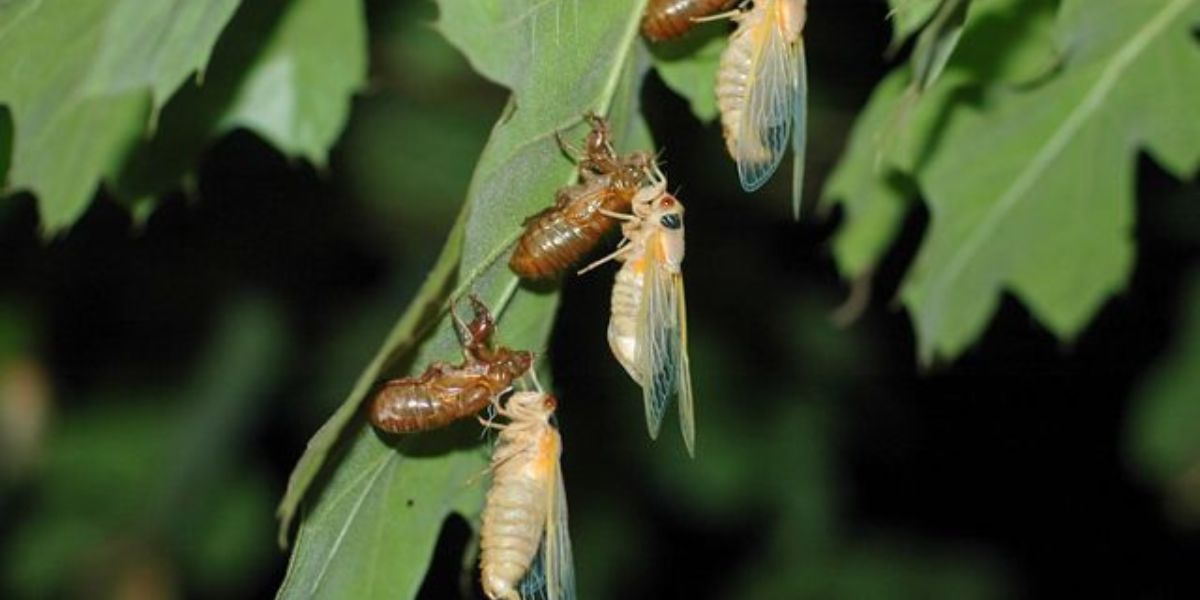Cicadas are set to return across parts of the United States in 2025, but their appearance is expected to be far less dramatic than the historic spectacle seen in the spring of 2024.
Last year, multiple broods of periodical cicadas emerged at once for the first time in over two centuries, filling forests and neighborhoods with their deafening calls and sheer numbers. It was a rare natural event that captivated scientists and overwhelmed some communities.
This spring, however, the emergence will be more localized and less intense, as only one brood – Brood XIV – is expected to appear. While still impressive in scale, this single-brood event will be more manageable and limited to specific regions in the eastern U.S.
Who is emerging in 2025? Meet Brood XIV
Brood XIV is one of the largest groups of 17-year periodical cicadas. These insects are known for their synchronized, noisy emergence from underground every 17 years. According to researchers at the University of Connecticut, Brood XIV is the only 17-year cicada brood set to emerge in 2025. Their last appearance was in 2008.
These cicadas spend the vast majority of their lives underground as nymphs, feeding on tree roots. When they finally emerge, they do so in astonishing numbers – emerging together to molt, mate, lay eggs, and die, all within matter of weeks.
When will cicadas emerge in 2025?
While the exact date of their arrival varies depending on weather and location, cicadas usually begin to emerge once the soil about 8 inches below the surface warms to around 64 degrees Fahrenheit – this typically happens in May.
In 2025, experts expect Brood XIV to appear sometime in mid to late May and remain active into June. During this time, the cicadas mature rapidly, mate, and lay eggs in tree branches. Shortly after, the adults die off, and the cycle continues as their newly hatched offspring fall to the ground and burrow underground to start their 17-year journey.
The role of climate in cicada emergence
Climate change is beginning to influence when and where cicadas appear. For example, in 2024, the insects emerged in Georgia nearly two weeks earlier than expected due to unusually warm temperatures. Researchers are keeping a close eye on Brood XIV this year to monitor any further shifts in timing or geographical patterns caused by changing climate conditions.
Where will Brood XIV be found?
Brood XIV, often called the “Great(er) Eastern Brood”, has a wide historical range across the eastern United States. Their 2025 emergence is expected in:
- North Georgia
- Kentucky
- Tennessee
- Southern Indiana and Ohio
- North Carolina and Virginia
- West Virginia and Maryland
- Parts of Pennsylvania, New Jersey, New York, and Massachusetts
However, researchers have noticed changes in the brood’s distribution. For instance, the cicada population on Long Island has declined, and their presence appears to be shifting in parts of southwestern Ohio and southeastern Indiana. Scientists plan to study the 2025 emergence closely to better understand these evolving patterns.
How many cicadas will there be?
Estimating insect populations is always challenging, and cicadas are no exception. In 2024, when two broods emerged simultaneously, experts predicted the appearance of hundreds of trillions – or possibly even quadrillions – of cicadas around the country.
This year’s emergence will be significantly smaller, with only Brood XIV surfacing. Still, researchers believe that over a trillion cicadas could emerge in total. While that number may seem staggering, these insects will not appear everywhere at once – instead, they will be densely concentrated in their traditional regions.
Cicadas 2025: What to expect
Although 2025 won’t bring a record-breaking cicada season, many communities in the eastern U.S. will still experience the sights and sounds of Brood XIV.
Their loud mating calls, short-lived presence, and massive numbers may seem overwhelming to some – but for scientists and nature enthusiasts, it’s a rare chance to witness one of nature’s most fascinating cycles.




